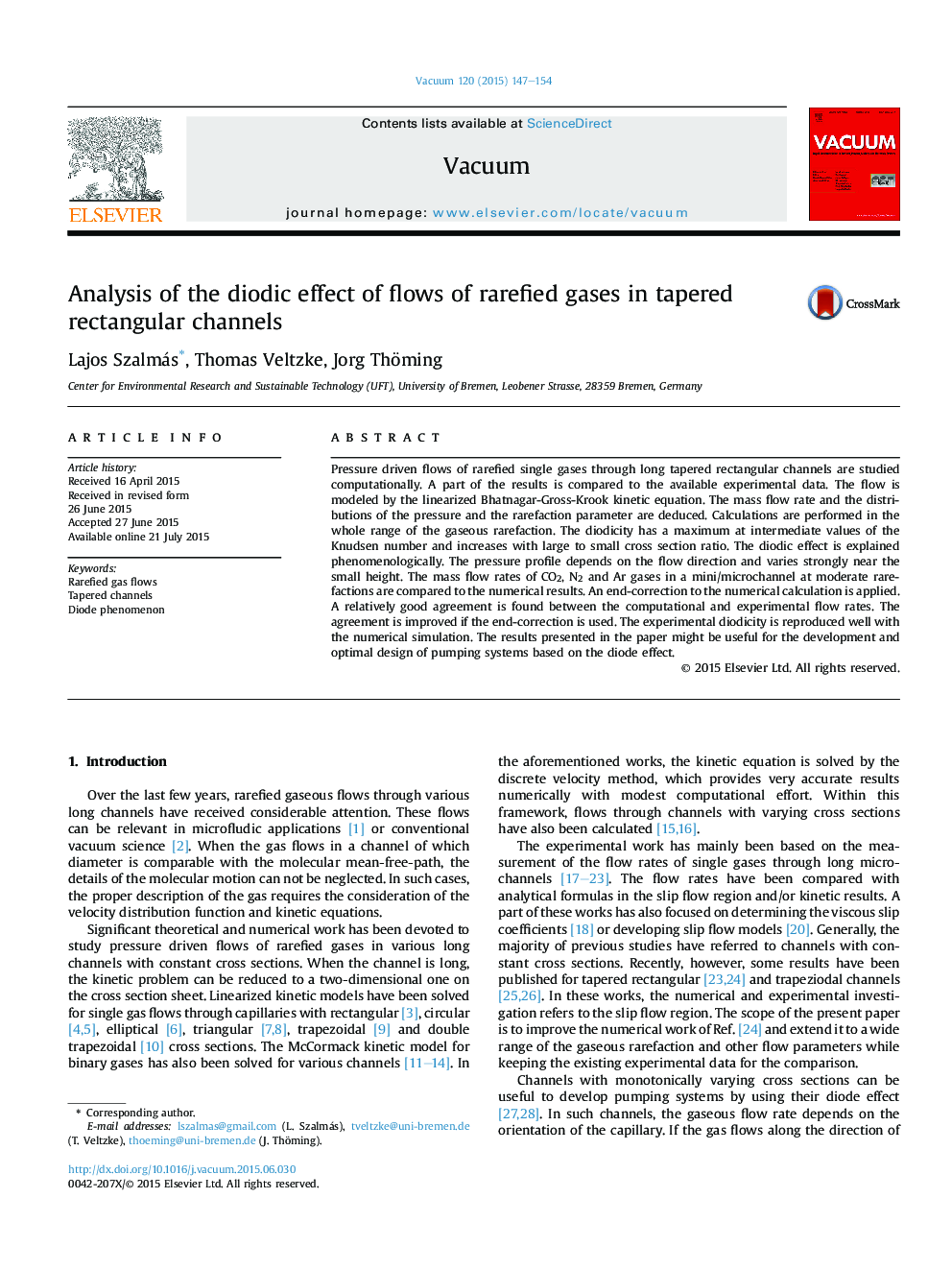| Article ID | Journal | Published Year | Pages | File Type |
|---|---|---|---|---|
| 1689518 | Vacuum | 2015 | 8 Pages |
•The diode effect of gaseous flows in tapered long channels is analyzed numerically.•The diodicity has a maximum in the transition region.•The diode effect is explained phenomenologically.•The numerical results agree well with the available experimental data.
Pressure driven flows of rarefied single gases through long tapered rectangular channels are studied computationally. A part of the results is compared to the available experimental data. The flow is modeled by the linearized Bhatnagar-Gross-Krook kinetic equation. The mass flow rate and the distributions of the pressure and the rarefaction parameter are deduced. Calculations are performed in the whole range of the gaseous rarefaction. The diodicity has a maximum at intermediate values of the Knudsen number and increases with large to small cross section ratio. The diodic effect is explained phenomenologically. The pressure profile depends on the flow direction and varies strongly near the small height. The mass flow rates of CO2, N2 and Ar gases in a mini/microchannel at moderate rarefactions are compared to the numerical results. An end-correction to the numerical calculation is applied. A relatively good agreement is found between the computational and experimental flow rates. The agreement is improved if the end-correction is used. The experimental diodicity is reproduced well with the numerical simulation. The results presented in the paper might be useful for the development and optimal design of pumping systems based on the diode effect.
